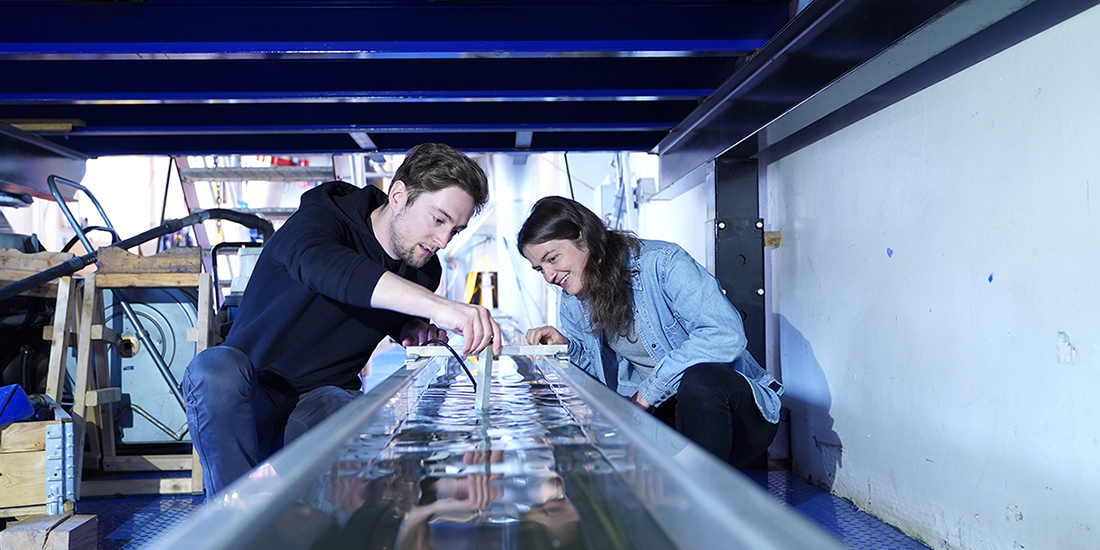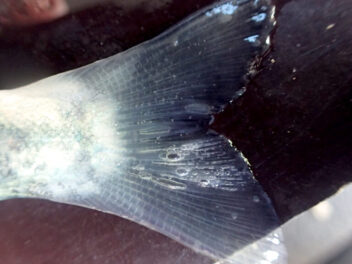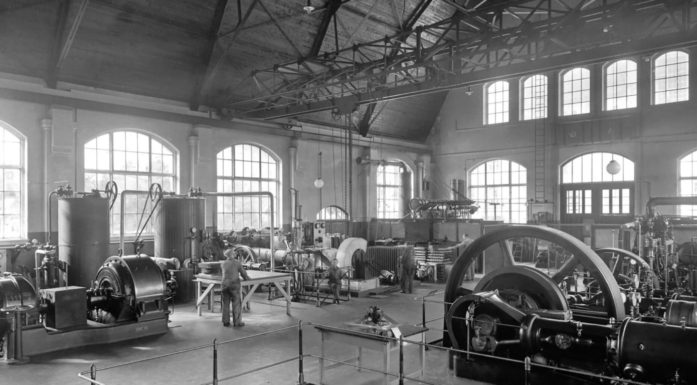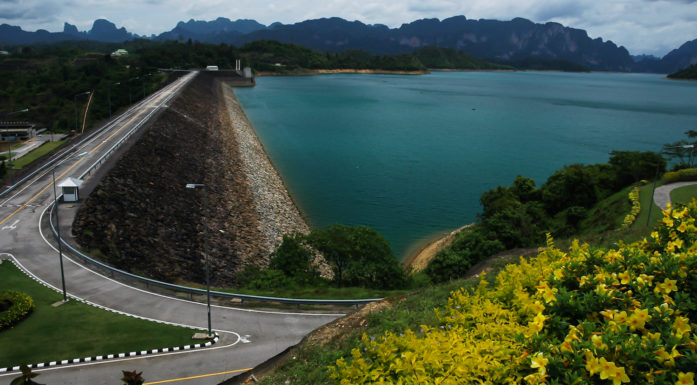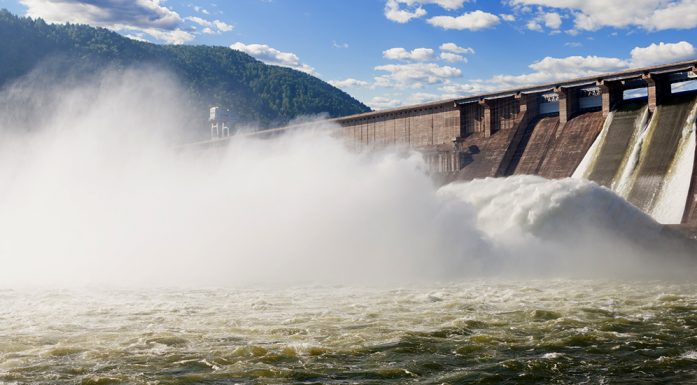Ultrasound can save fish in hydropower rivers
Shooting sound waves through water can remove dissolved gas that results from hydropower production in rivers. This gas can harm fish. Researchers are now ready to test techniques to reduce the risk in real hydropower plants.
The phenomenon of gas supersaturation occurs when air enters water-filled hydropower inlets and is then exposed to high pressure. When this water is subsequently released into the river below the hydropower plant, it’s almost like opening a bottle of champagne, filling the river with bubbles.
There is so much air in the water that it can harm fish and other species. In the worst case, fish can die from gas bubble disease – a disease similar to decompression sickness in humans.
There are currently no requirements in place to monitor and limit gas supersaturation in rivers that are downstream of hydropower plants in Norway, but studies have shown that this may be a problem in many more power plants than previously thought.
If requirements are introduced to avert the problem of gas supersaturation, this solution could help power companies avoid costly shutdowns of their plants when the problem occurs – as well as improve the environment.
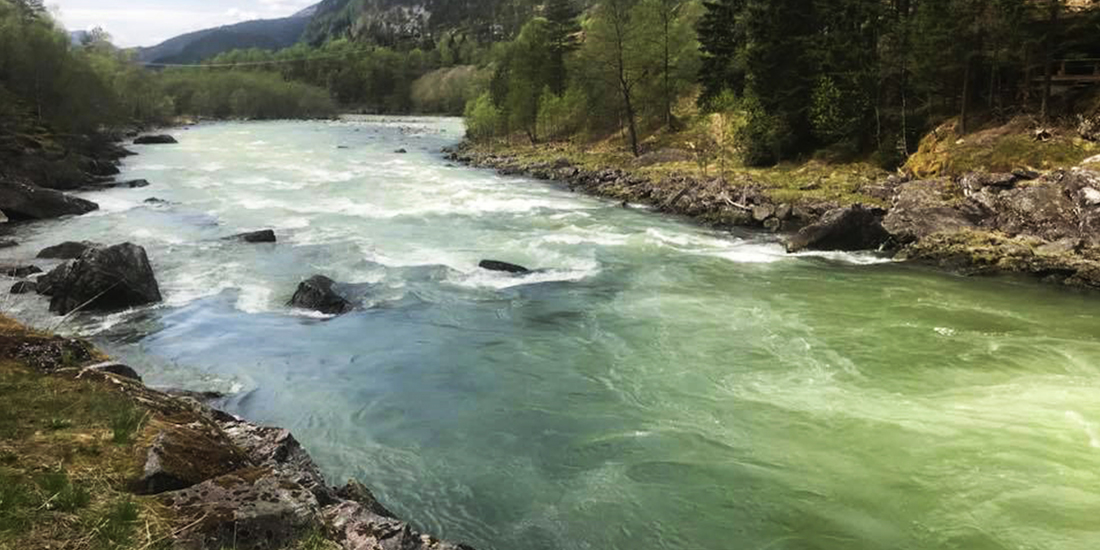
The salmon river Ekso, which clearly has gas-supersaturated water. Photo: Eirik S. Normann, Norce LFI
- You might also like: The Alchemists: Turning wild water into white coal
An ultrasound ‘speaker’
The scientists have conducted ultrasound trials in a specially built water channel in NTNU’s Waterpower Laboratory.
The technical solution is a type of speaker that creates ultrasound. It creates pressure waves in the water that cause dissolved gas molecules to accumulate and form bubbles (acoustic cavitation).
The bubbles join up, become larger and rise to the surface. The method has been tested in the small and medium-sized laboratory, and W. Ludwig Kuhn shows in his doctoral thesis that the method immediately reduces gas saturation.
This video shows how researchers created microbubbles in a specially built water channel at NTNU’s Waterpower Laboratory. It shows how sound creates pressure waves in the water that cause the bubbles to accumulate, grow larger and rise to the surface. Video: Juliet Landrø/HydroCen
Collaboration has led to useful results
Collaboration with the energy industry and biologists has been important in implementing the project. “Natural scientists have contributed to important knowledge about the consequences and extent of gas supersaturation, and being able to discuss various solutions along the way with experts from the industry has been essential.
At first we thought we could place the ultrasound technology inside the suction pipe at the hydropower plant,” says Kuhn.
This was not well received by the industry, because it was too great a risk to install the equipment so close to the turbine. They feared it might affect the flow of water and thus affect other parts of the hydropower plant.
“Therefore, the conclusion is that the equipment should be placed in the river at the hydropower plant outlet,” says Kuhn.
Large-scale testing in hydropower rivers
The scientists are now planning to conduct field trials to investigate the extent to which this technology can be used in the hydropower industry. Hydropower inlets are enormously large, transporting as much as one million litres of water per second.
The laboratory trials show that it is not a good idea to make a giant version of the ‘ultrasound speaker’ (actually called a transducer), but that it would be more beneficial to use several smaller installations that collectively can do the job. When this is tested downstream of the hydropower plant, it will still be a major technical installation.
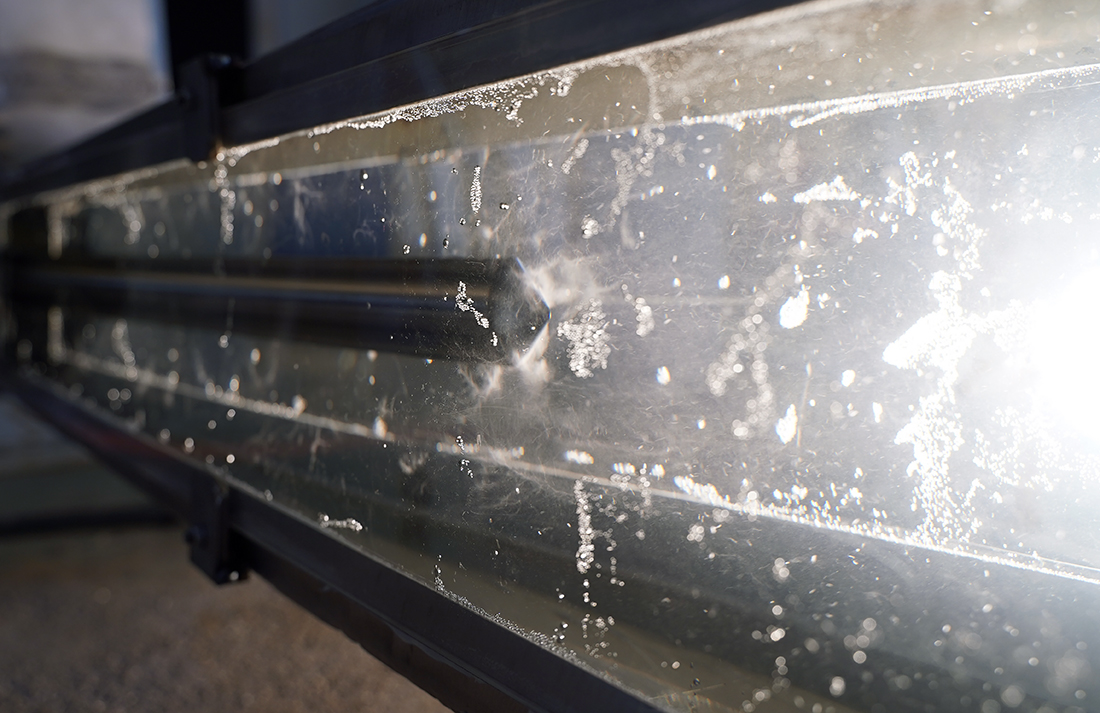
The ‘ultrasound speaker’ creates pressure waves in the water that cause dissolved gas molecules to join up and form bubbles that rise to the surface. Photo: Juliet Landrø/HydroCen
“A lot of equipment from different suppliers needs to be tested to ensure optimal functionality,” says Kuhn.
Great potential
“So far, the results in the DeGas project have exceeded all expectations. The benefits to the hydropower industry have much greater potential than we thought at the outset,” says supervisor and project manager Ole Gunnar Dahlhaug. He is a professor at NTNU’s Department of Energy and Process Engineering.
“The method is efficient and is likely to have a relatively low cost in terms of installation, operation and maintenance.”
Collaborators have flocked to look at the trials conducted by doctoral research fellow W. Ludwig Kuhn in the DeGas project, which is linked to the HydroCen research centre.
“It has been fun to show the trials to our research and industry partners. Even the Minister of Energy Terje Aasland has stopped by. It is very useful to get input from many different sides,” says Kuhn.
The project partners are: NTNU, Sintef, NINA, NORCE, EDRMedeso, Fornybar Norway, Hafslund Eco, Statkraft, Eviny, Otra Kraft and Troms Kraft.
Read more:
Kuhn, W. Ludwig: Evaluation of ultrasonic degasification as a tool to mitigate total dissolved gas supersaturation downstream hydropower plants, NTNU PhD Dissertation, 2023
Ludwig Kuhn, Bjørn Winther Solemslie, Jean-Yves Hihn and Ole Gunnar Dahlhaug: Evaluating natural degassing in a river to create a baseline for comparison to technical degassing methods. Journal of Physics: Conference Series, 2023
DOI 10.1088/1742-6596/2629/1/012032
Pengcheng Li, David Z. Zhu, Ran Li, Yuanming Wang, James A. Crossman, W. Ludwig Kuhn: Production of total dissolved gas supersaturation at hydropower facilities and its transport: A review Science Direct, Water Research, Sept 2022, https://doi.org/10.1016/j.watres.2022.119012
A potentially deadly problem gains attention due to climate change, Hydro 2023
Artificial gas supersaturated water from small hydropower plants: methods to detect air entrainment at intakes. Master’s thesis Asgeir Grøm Sæle, UIB 2022
Ulrich Pulg, Trond Einar Isaksen, Gaute Velle, Sebastian Stranzl, Espen O. Espedal, Knut W. Vollset, Einar Bye-Ingebrigtsen, Bjørn T. Barlaup: Gassovermetning i vassdrag – en kunnskapsoppsummering [Gas supersaturation in watercourses – a summary of the knowledge to date] NORCE LFI, 2018
